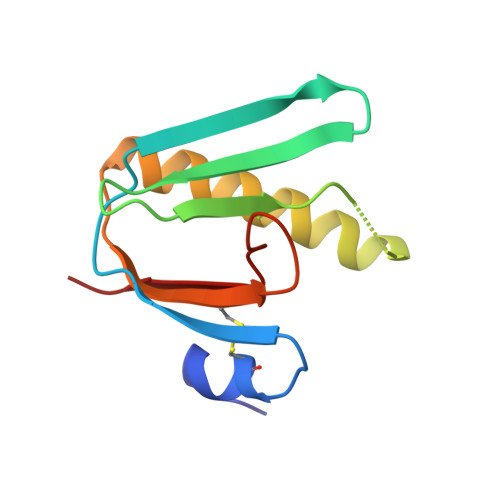Specificity ofEscherichia coliHeat-Labile Enterotoxin Investigated by Single-Site Mutagenesis and Crystallography.
Heggelund, J.E., Heim, J.B., Bajc, G., Hodnik, V., Anderluh, G., Krengel, U.(2019) Int J Mol Sci 20
- PubMed: 30736336
- DOI: https://doi.org/10.3390/ijms20030703
- Primary Citation of Related Structures:
6IAL - PubMed Abstract:
Diarrhea caused by enterotoxigenic Escherichia coli (ETEC) is one of the leading causes of mortality in children under five years of age and is a great burden on developing countries. The major virulence factor of the bacterium is the heat-labile enterotoxin (LT), a close homologue of the cholera toxin. The toxins bind to carbohydrate receptors in the gastrointestinal tract, leading to toxin uptake and, ultimately, to severe diarrhea. Previously, LT from human- and porcine-infecting ETEC (hLT and pLT, respectively) were shown to have different carbohydrate-binding specificities, in particular with respect to N -acetyllactosamine-terminating glycosphingolipids. Here, we probed 11 single-residue variants of the heat-labile enterotoxin with surface plasmon resonance spectroscopy and compared the data to the parent toxins. In addition we present a 1.45 Å crystal structure of pLTB in complex with branched lacto- N -neohexaose (Galβ4GlcNAcβ6[Galβ4GlcNAcβ3]Galβ4Glc). The largest difference in binding specificity is caused by mutation of residue 94, which links the primary and secondary binding sites of the toxins. Residue 95 (and to a smaller extent also residues 7 and 18) also contribute, whereas residue 4 shows no effect on monovalent binding of the ligand and may rather be important for multivalent binding and avidity.
Organizational Affiliation:
Department of Chemistry, University of Oslo, Postbox 1033 Blindern, 0315 Oslo, Norway. j.e.heggelund@farmasi.uio.no.


















